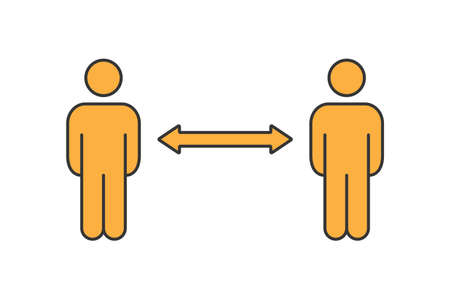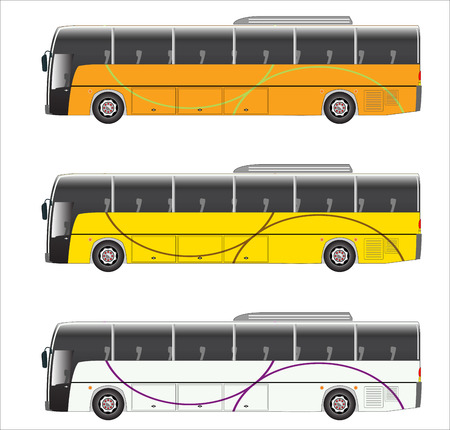Understanding Cultural Diversity in the US
The United States is often described as a “melting pot” because of its wide variety of cultural backgrounds, values, and beliefs. This diversity plays a big role in how people view and accept assistive technology—such as wheelchairs, communication devices, or hearing aids. Understanding these differences is the first step to making sure assistive technology really helps everyone who needs it.
Exploring Cultural Backgrounds
People living in the US come from many different places—Latin America, Asia, Africa, Europe, and more. Each group brings unique traditions, languages, and ways of thinking about health and independence. For example, some cultures value family involvement in decision-making, while others may focus on individual choice.
Cultural Values That Influence Assistive Technology Use
| Cultural Value | Potential Impact on Assistive Technology |
|---|---|
| Family-Centered Decision Making | Families may want to be involved in selecting devices, which can affect acceptance and use. |
| Respect for Elders | Older adults’ opinions may be prioritized; their comfort with technology is crucial. |
| Community Support | Communities that support each other can help encourage use of new technology. |
| Language Preferences | Lack of information in a persons native language may limit understanding or willingness to use technology. |
| Views on Disability | Some cultures see disability as something private or even stigmatized, which can affect openness to assistive devices. |
Beliefs and Perceptions About Assistive Technology
The meaning people attach to assistive technology varies. For some, using a device might feel empowering; for others, it could feel embarrassing or unnecessary. These feelings are shaped by cultural beliefs about what it means to be independent or disabled. Understanding these perspectives helps professionals choose and introduce technologies that fit people’s lives—not just their medical needs.
2. Barriers and Facilitators to Accessing Assistive Technology
Accessing assistive technology (AT) in the United States is shaped by a variety of factors that can either help or hinder individuals from different cultural backgrounds. These barriers and facilitators often relate to culture, language, and socioeconomic status. Understanding these aspects can help professionals provide better support for people who need AT.
Cultural Factors
Cultural beliefs and values play a major role in how people view disability and assistive devices. In some communities, using AT might be seen as empowering, while in others it could carry a stigma. For example, certain families may prefer home remedies or traditional approaches instead of technology-based solutions. Health care providers need to respect these perspectives and offer culturally sensitive options.
Linguistic Barriers
Language differences can make it difficult for people to learn about or use AT. Instructions, user guides, and customer support are often provided only in English, which can be challenging for non-English speakers or people with limited literacy skills. Providing translated materials and access to interpreters helps bridge this gap.
Socioeconomic Factors
The cost of assistive technology is a significant barrier for many families. Insurance coverage varies widely, and not everyone qualifies for government programs. People from lower-income backgrounds may also lack access to information about available resources or how to apply for assistance programs.
Common Barriers and Facilitators Table
| Factor | Barrier Example | Facilitator Example |
|---|---|---|
| Cultural Beliefs | Stigma associated with disability or using devices | Community education about benefits of AT |
| Language Access | User manuals only in English | Translated instructions, multilingual support staff |
| Socioeconomic Status | High out-of-pocket costs, limited insurance coverage | Financial aid programs, public funding initiatives |
| Awareness & Education | Lack of knowledge about available AT options | Outreach events in community centers, schools, clinics |
| System Navigation | Difficulties understanding application processes for funding/aid | Case managers or advocates to guide families step-by-step |
The Importance of Community Engagement
Engaging with community leaders, local organizations, and families is key to identifying specific needs and overcoming barriers. By building trust and opening lines of communication, providers can create solutions that respect cultural values while improving access to helpful technologies.

3. Culturally Responsive Assessment and Selection Processes
Understanding the Importance of Cultural Awareness in AT Assessment
When selecting assistive technology (AT) for individuals and families from diverse backgrounds in the United States, it’s essential to recognize that cultural beliefs, language, family structure, and values can strongly influence needs and preferences. A culturally responsive approach helps ensure that AT solutions are effective, accepted, and sustainable.
Strategies for Evaluating Needs Across Cultures
Here are some practical strategies to make the assessment and selection process more culturally inclusive:
- Build Trust: Take time to establish rapport with individuals and families. Show respect for their culture by learning basic greetings or customs.
- Use Culturally Relevant Communication: Offer information in the preferred language of the individual or family. Use interpreters if needed and avoid jargon or technical terms.
- Assess Family Roles: Recognize who makes decisions in the family. In some cultures, elders or extended family members may be involved in health choices.
- Ask About Values and Preferences: Instead of assuming what is best, ask open-ended questions about daily routines, beliefs around disability, and expectations from technology.
- Include Community Input: Seek input from community leaders or cultural liaisons who understand local practices and can help bridge gaps in understanding.
Sample Questions for a Culturally Sensitive Assessment
| Assessment Area | Culturally Responsive Question Example |
|---|---|
| Communication Needs | “What language do you prefer to use at home and with your healthcare providers?” |
| Family Involvement | “Who in your family would you like to include when discussing assistive technology options?” |
| Cultural Beliefs about Disability | “Can you share your thoughts about using devices to help with daily activities?” |
| Daily Life & Routines | “What are some important activities or traditions you would like to continue with support from technology?” |
| Community Resources | “Are there community groups or leaders you trust who could help us understand your needs better?” |
Selecting Appropriate Assistive Technology Solutions
The selection process should match not only functional needs but also cultural preferences. Here’s how practitioners can incorporate these factors:
- Offer Choices: Present a range of AT options, considering design, appearance, ease of use, and how visible the device will be during community events or religious practices.
- Cultural Acceptability: Discuss any stigmas or beliefs associated with certain technologies within the person’s cultural group.
- User Training: Provide training materials that reflect the language and literacy level of users and their families.
- Sustainability: Ensure ongoing support is accessible through culturally familiar channels—such as local community centers or faith-based organizations.
Key Takeaways for Practitioners Working in Diverse US Communities
- Avoid one-size-fits-all solutions; personalize each assessment.
- Cultivate cultural humility by continuously learning about different backgrounds.
- Create partnerships with local cultural groups for guidance and feedback throughout the process.
- Pilot-test devices whenever possible in real-life settings meaningful to the user.
4. Best Practices for Implementation in Diverse Communities
Understanding Community Needs and Building Trust
When bringing assistive technology (AT) into diverse US communities, it’s important to first understand each community’s unique needs and values. Taking time to listen to local leaders, families, and individuals helps build trust. Community engagement meetings, surveys in preferred languages, and collaboration with local organizations can help providers learn about cultural beliefs related to disability and technology.
Effective Training Approaches
Providing training that respects cultural backgrounds increases the success of AT adoption. Here are some strategies:
| Training Approach | How It Respects Culture |
|---|---|
| Use of Native Languages | Delivers instruction in the participants primary language to ensure understanding |
| Culturally Relevant Examples | Incorporates real-life situations familiar to the community |
| Peer Mentoring | Connects users with trainers from similar backgrounds for relatable guidance |
| Family Involvement | Engages family members who play key roles in decision-making and daily support |
Support Systems that Leverage Cultural Strengths
Ongoing support is crucial for successful AT use. Culturally aware providers offer support in ways that fit each community’s structure:
- Community Health Workers: Trusted members who provide ongoing assistance and bridge communication gaps.
- Cultural Liaisons: Individuals who help explain the benefits of AT within a cultural context.
- Accessible Support Materials: Instructions and troubleshooting guides available in multiple languages and formats.
- Culturally-Responsive Help Desks: Phone or online support staffed by people trained in cross-cultural communication.
Integration Strategies for Lasting Impact
Integrating AT into daily life works best when it aligns with community customs and routines. For example, group workshops held at familiar locations like community centers or faith-based organizations make learning more accessible. Partnering with local educators, religious leaders, or respected elders encourages acceptance and wider use of technology. Adapting AT devices to reflect cultural preferences—such as designs, colors, or communication styles—also boosts comfort and usability.
Sample Integration Plan Table
| Step | Culturally Responsive Action |
|---|---|
| Select AT Devices | Consult with community members on preferred features and aesthetics |
| Create Training Sessions | Offer flexible schedules around cultural events or holidays |
| Sustain Support Networks | Develop local peer groups for shared learning and encouragement |
| Monitor Feedback | Use culturally appropriate feedback methods (storytelling, group discussions) |
Key Takeaway: Community-Led Implementation Builds Trust
The most effective way to introduce assistive technology is by working hand-in-hand with communities. When providers respect cultural differences, leverage local strengths, and invite ongoing feedback, trust grows—and so does the successful use of technology that improves lives.
5. Collaborating With Stakeholders and Building Community Partnerships
Why Collaboration Matters in Assistive Technology
When introducing assistive technology (AT) to diverse US communities, it is essential to work together with families, community leaders, and local organizations. Their insights help ensure that AT solutions are not only effective but also culturally appropriate and sustainable over time.
Ways to Engage Culturally Diverse Stakeholders
Building trust and strong relationships with stakeholders requires intentional outreach and respect for each communitys unique values and traditions. Here are some practical strategies:
| Stakeholder | Engagement Strategies |
|---|---|
| Culturally Diverse Families | – Hold information sessions in preferred languages – Invite family input in AT selection – Provide hands-on demonstrations and training – Offer flexible meeting times to accommodate schedules |
| Community Leaders | – Consult early in the planning process – Recognize and respect their influence – Collaborate on culturally relevant outreach materials – Involve them in decision-making committees |
| Local Organizations | – Partner with cultural centers, faith groups, and non-profits – Share resources and educational workshops – Co-host events to increase awareness of AT options – Develop referral pathways to connect individuals with needed support |
Building Sustainable Community Partnerships
Long-term success depends on creating partnerships that go beyond a single project or event. This means:
- Continuous Communication: Regular check-ins help address emerging needs and maintain trust.
- Cultural Competence Training: Providing education for professionals ensures respectful interactions.
- Shared Leadership: Encouraging community members to take active roles in AT planning and implementation leads to more sustainable outcomes.
- Feedback Loops: Collect ongoing feedback from all stakeholders to improve programs and adapt as communities evolve.
Example: How a Community Partnership Works in Practice
A local school district looking to introduce communication devices for students partners with a Latino community center. The center helps translate training materials, hosts family workshops in Spanish, and offers space for device trials. Community leaders are invited to share their perspectives at school board meetings. Families provide feedback about their children’s needs, ensuring solutions are both effective and culturally sensitive. This approach strengthens relationships and makes AT support more accessible for everyone involved.


